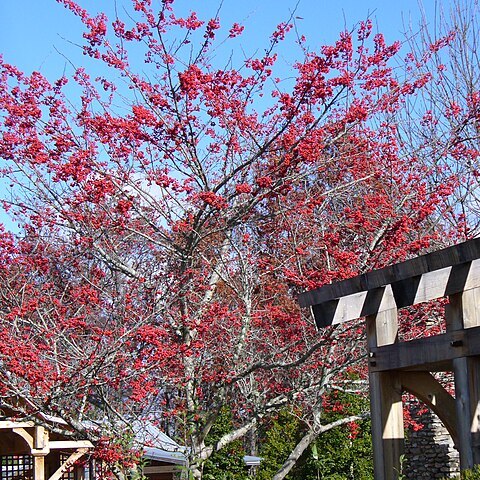Tree to 12 m; thorns few or none; lvs variable and often asymmetric, thin, yellowish-green, dull, glabrous except for tufts or lines of persistent tomentum along the veins beneath, the floral ones obovate to rhombic, elliptic, oblong-ovate, or lanceolate, commonly toothed to near the base and not evidently lobed, 2.5–6 × 1.5–3 cm, the vegetative ones more often ovate to suborbicular and usually lobed at least toward the base; fls 1.2–1.5 cm wide, in glabrous compound cymes; sep lanceolate, entire, usually eventually deciduous; fr red to orange-red or rarely yellow, 5–8 mm thick; nutlets 3–5. Del. to Fla. and Tex., and n. in the Mississippi Valley to sw. Ind., Mo., se. Kans., and Okla.
A small tree. The fruit are 6 mm-30 mm across.


